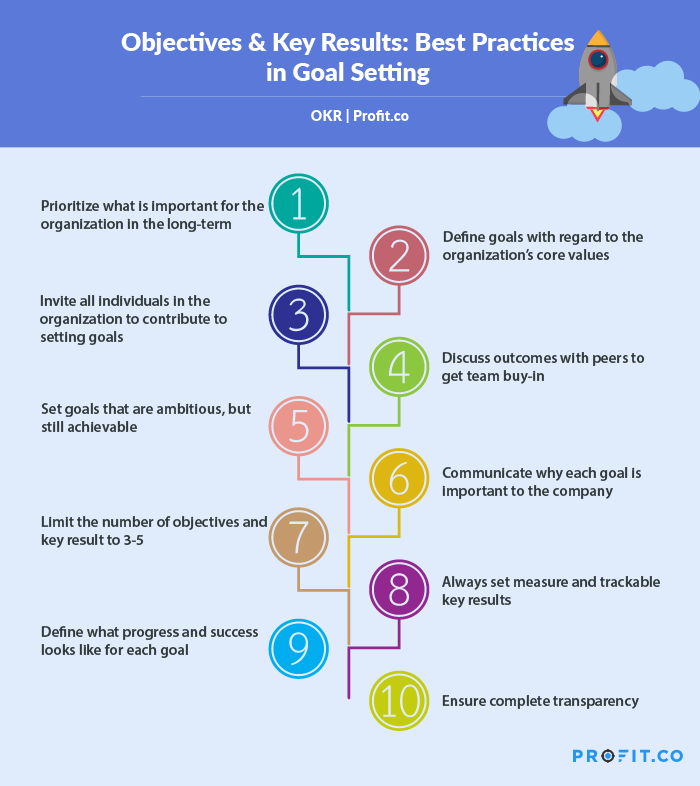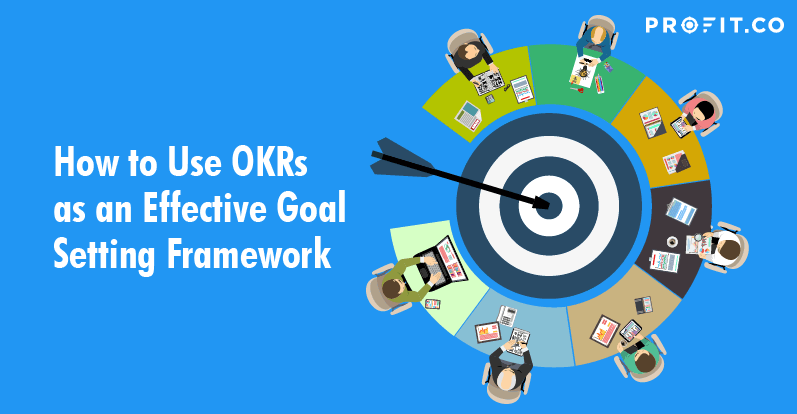Achieving performance and results and reaching the objectives of an organization is neither simple nor straightforward.
An organization is a sum of all its employees, and the success of the organization is an outcome of the consolidation of all the achievements that the employees have made. So, in order to achieve the best results possible and reach the objectives in the shortest timespan, it is crucial to make every employee work towards the objectives and perform to the best of his or her abilities.
Coming together is a beginning, staying together is progress, and working together is success.
But when goals are not properly aligned, the organization can lack purpose. This makes strategy execution and success difficult. So, the importance of having a framework that binds every employee to a common purpose can never be stated enough. This makes goal-setting extremely important, and Objectives and Key Results (OKR) helps organizations set goals effectively and achieve alignment at all levels.

How does goal setting in OKR lead to over achievement?
Objectives and Key Results (OKR) is an outcome-driven goal setting framework that enables organizations to set ambitious objectives and motivate employees to overachieve constantly.
In order to think big and do more, OKR goal setting takes the focus off tasks and places emphasis on what every team and individual needs to deliver. This approach allows employees to work out a path by themselves and focus on achieving their goals rather than proposing detailed action plans and constantly reviewing them.
The focus on ends rather than the means enables and encourages individuals and teams to aim high when they set goals. On one hand, it gives them the freedom and flexibility to set their own individual OKR goals; on the other hand, it hands them the responsibility to create outcomes that lead to the achievement of an organization’s ambitious objectives.
As a result, the goal setting process in OKR enables individuals and teams to challenge themselves, think out of the box to solve issues, and achieve more than is usually possible for them. When every individual and team sets ambitious goals to strive toward, quarterly progress can snowball into a great leap for the organization.
Want to track your company’s goals on an agile, intuitive OKR software? Sign up for a free trial of Profit.co today!
The OKR goal setting process:
The OKR goal setting process is simple and straightforward. Goal setting in OKR occurs at three levels.
1. Organization Level
The objective of the organization in OKR is unachievable and high that the organization considers 70% achievement of the same in a year as success. Goals at the company OKR level are set by the leadership team and broken down into smaller and measurable quarterly goals.
2. Team Level
Depending on the specialization and purpose of each team in the organization, the quarterly objectives of the organization are split for each team to complete. These form the team OKRs. The team leaders and managers discuss these goals with the organization’s leadership team and set them.
3. Individual Level
The team OKRs are further broken down and simplified into weekly deliverables. This sets the baseline for the individual OKRs. The team leader or manager sits with the team members, and the individual OKRs are set with everyone’s participation.
So, there is a logical flow of goals from top to bottom as they are cascaded throughout the organization. In contrast, the achievement of goals can also build from the bottom up, and progress and targets can roll up from one level to another.
Objectives and Key Results: Best Practices in Goal Setting
How do I use OKRs to set goals?

Following are some of the best practices in OKR goal setting.
- Prioritize what is important for the organization and set goals that deliver outcomes, which will, in the long term, lead to the fulfillment of the organization’s objectives.
- Define your goals in line with the organization’s core values.
- Allow participation of everyone in OKR goal setting at individual level, and create ownership of goals and the tasks that need to be done to achieve those goals.
- Let individuals discuss with team members and achieve consensus on what outcomes they will produce towards the team goals.
- Set individual goals that are hard to achieve, yet practically achievable.
- Establish the purpose in objectives and the expected outcomes in key results.
- Limit the number of OKRs between three and five.
- Always set measurable and trackable key results.
- Define the indicators of progress that help in tracking the goals.
- Ensure transparency in goal setting.
Ready to start your OKR Journey for FREE?
Bad OKRs vs Good OKRs: A goal setting example
It is important to follow the best practices for OKR goal setting to make the right impact. Failing to follow them can result in lack of focus on impact, outcomes and change in behavior.
What does a Bad OKR look like?
Sometimes, in order to make sure you’re making the right choices with your OKRs, you have to know what the wrong choices look like. Let’s take a look at an example of a bad OKR. A marketing executive, based on his goals, may come up with his or her individual OKRs as follows:
 Objective
Objective
Improve my ability to communicate better with the customers and become proficient in digital marketing
Target Date: Q4-2021
Visibility: All Employees
 Key Results
Key Results
Complete a certification on pay-per-click ads by Google
Read five ebooks on digital marketing
Take digital learning courses on online marketing

While the above mentioned OKR may sound seemingly good, this has some specific problems:
- This OKR lacks focus on any meaningful impact. It focuses on the tasks, which are the means and not the ends.
- It does not deliver any measurable outcomes. There is no way to quantify achievement with this OKR.
- It adds value for the individual, but isn’t necessarily connected to the organizational objectives.
- The objective itself is not simple and straight forward.
What does a Good OKR look like?
If you’re having trouble formulating great key results, you can write key results using the SMART goal framework. SMART stands for Specific, Measurable, Achievable, Realistic, Time-bound.
Making a few key changes to the above OKR can greatly improve the effectiveness of this OKR. For example:
 Objective
Objective
Become a digital marketing champion
Target Date: Q4-2021
Visibility: All Employees
 Key Results
Key Results
Increase # of social media followers from 1000 to 3000
Increase the CTR on online ads from 1% to 3.5%
Increase the number of demos from 0 to 300

In this case,
- The objective is simple, with an ambitious and straightforward goal.
- All key results are measurable and trackable.
- The OKRs are focused on real goals, outcomes and impact rather than the tasks.
- The OKRs are aligned to the organizational goal of growth and profitability.
- The key results are aimed at impacting the behavior of the customers.
To learn how Profit.co’s OKR software can help teach your team to set amazing goals every quarter, book a free demo with our OKR experts!

